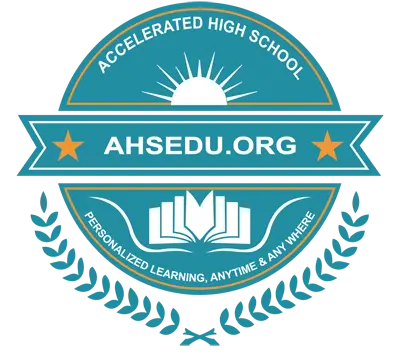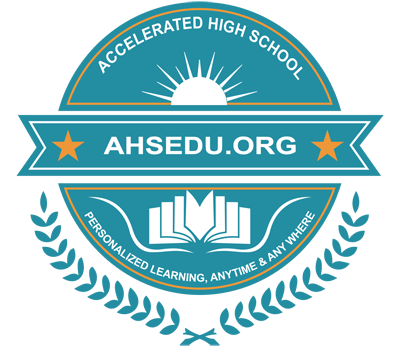Accelerated High School
Standardized Curriculum of General Science-VI
In the 21st century, science and technology continue to shape every aspect of our lives, from medical innovations to climate solutions and space exploration. At the Grade 6 level, students deepen their understanding of scientific and engineering concepts by exploring topics ranging from matter and energy to ecosystems and space science. They learn how to design and conduct experiments, analyze data, and apply engineering design processes to solve real-world problems. By studying forces, motion, chemical reactions, cells, genetics, and environmental systems, students develop critical thinking and problem-solving skills. Through investigations—such as modeling the water cycle, experimenting with electricity and magnetism, exploring chemical changes, and analyzing energy transformations—students connect classroom learning to global issues like sustainability, health, and technology-driven solutions. This foundation empowers students to make informed decisions, think like scientists and engineers, and contribute meaningfully to discussions on challenges like climate change, biodiversity conservation, renewable energy, and innovations for a better future.
Mission:
All Grade 6 students will develop a deep understanding of scientific concepts, practices, and engineering processes necessary for informed personal decisions, responsible participation in civic and environmental issues, and preparation for future STEM careers (for those who choose). Through rigorous exploration of matter, energy, ecosystems, Earth systems, genetics, engineering design, and technology, students will learn to investigate real-world problems, analyze evidence, and communicate findings effectively.
Vision:
Grade 6 Science will prepare students to become scientifically literate individuals who can:
- Apply Scientific Thinking and Skills: Use scientific knowledge and inquiry skills to analyze phenomena, solve problems, and develop models explaining processes such as chemical reactions, energy transformations, climate systems, and ecosystem interactions.
- Engage in Systems Thinking: Understand the connections between Earth systems, human impacts, and technology through modeling and data interpretation to evaluate environmental and societal challenges.
- Conduct Evidence-Based Investigations: Design, carry out, and refine experiments—such as investigating motion, electricity, diffusion, or plant growth—to collect accurate data and develop logical conclusions.
- Analyze and Interpret Multiple Sources: Read and evaluate scientific texts, journal articles, real-time data, and multimedia resources to build evidence-based arguments about current scientific issues, from renewable energy to biotechnology.
- Communicate Scientific Ideas Effectively: Present findings through lab reports, digital presentations, posters, and collaborative discussions, using scientific vocabulary and data visualizations to argue claims with evidence.
- Collaborate and Innovate: Work in teams to apply the engineering design process, test prototypes, and improve solutions for real-world challenges such as water filtration, wind energy, or space exploration missions.
Spirit and Intent:
The AHS Grade 6 Science curriculum has been carefully designed and standardized in alignment with the New Jersey Student Learning Standards for Science (NJSLS-S), which outline clear expectations for what students should know and be able to do while fostering three-dimensional science instruction across the physical sciences, life sciences, and Earth and space sciences. At the middle school level, students engage in rigorous learning experiences that challenge them to investigate real-world phenomena, design and test solutions to complex problems, analyze and interpret data, and construct and defend evidence-based explanations.
The Grade 6 curriculum builds upon the three dimensions of science learning—Science and Engineering Practices (SEPs), Disciplinary Core Ideas (DCIs), and Crosscutting Concepts (CCCs)—ensuring that these components are fully integrated within every unit rather than taught in isolation. Students use scientific practices to explore topics such as energy transformations, ecosystems, heredity, chemical reactions, forces and motion, Earth systems, space exploration, and technological innovations. They develop models, conduct experiments, and engage in argumentation from evidence to make sense of complex systems and design innovative solutions to real-world challenges.
Because the NJSLS-S framework is rooted in coherence, connections, and contextual learning, each science and engineering practice and crosscutting concept appears multiple times across topics and grade levels, creating conceptual links between disciplines. By the end of Grade 6, students will have a strong foundation in critical thinking, problem-solving, and scientific literacy, preparing them to tackle global issues such as climate change, sustainable energy, biodiversity conservation, and space exploration with both scientific knowledge and engineering creativity.
Three Dimensions of AHS Science Curriculum:
The Grade 6 AHS Science Curriculum is built on the three-dimensional learning model of the New Jersey Student Learning Standards for Science (NJSLS-S). The performance expectations integrate Science and Engineering Practices, Disciplinary Core Ideas, and Crosscutting Concepts to ensure students not only gain knowledge but also apply it to real-world problems. By engaging in investigations, analyzing data, designing solutions, and constructing evidence-based arguments, students develop a deeper understanding of scientific phenomena across physical sciences, life sciences, and earth and space sciences.
The standards are designed to reflect the interconnected nature of science, ensuring that concepts such as matter and energy, ecosystems, weather systems, human anatomy, genetics, chemical reactions, forces and motion, electricity and magnetism, space science, biotechnology, and engineering practices are taught in an integrated way. Rather than learning these ideas in isolation, students explore how they overlap and influence one another, developing scientific reasoning, critical thinking, and problem-solving skills.
Furthermore, the performance expectations are written as flexible learning outcomes so that students can demonstrate proficiency through hands-on experiments, data interpretation, modeling, discussions, and engineering design challenges. This ensures students see science as a dynamic, interconnected discipline—preparing them to understand global issues, innovate with technology, and make informed decisions in the real world.
Curriculum for Grade-VI Science:
Standard 1: Matter and its Interactions.
Learning Objectives:
- Develop models to describe the atomic composition of simple molecules and extended structures.
- Analyze and interpret data on the properties of substances before and after the substances interact to determine if a chemical reaction has occurred.
- Gather and make sense of information to describe that synthetic materials come from natural resources and impact society.
- Develop a model that predicts and describes changes in particle motion, temperature, and state of a pure substance when thermal energy is added or removed.
- Develop and use a model to describe how the total number of atoms does not change in a chemical reaction and thus mass is conserved.
- Undertake a design project to construct, test, and modify a device that either releases or absorbs thermal energy by chemical processes.
Topics of AHS-GS:
Atoms and Molecules: Tiny Worlds Within
- Atoms and Elements: The Science of the Small
- Decoding Chemical Formulas and Models
- Matching Models: Formulas Meet Structures
- What’s Inside a Molecule? Atomic Composition Explained
- Sorting Substances: Elements and Compounds
- Periodic table
- Metals vs. Non-Metals: Properties and Uses
- Chemical reactions
- Balancing the chemical equations
- Chemical bonds
Chemical Reactions: Science in Motion - F1_Reactants and Products: The Recipe of Chemistry
- F2_Counting Atoms in Reactions Made Easy
- F3_Measuring Reactants and Products Accurately
- F4_Energy in Reactions: Absorbing and Releasing Heat
- F5_Physical vs. Chemical Changes: Spot the Difference
- F6_Chemistry at Work: The Art of Soapmaking
- F7_Food flavors: Chemistry in the Kitchen
- F8_Synthetic Materials
Standard 2: Motion and Stability: Forces and Interactions
Learning Objectives:
- Apply Newton’s Third Law to design a solution to a problem involving the motion of two colliding objects.
- Plan an investigation to provide evidence that the change in an object’s motion depends on the sum of the forces on the object and the mass of the object.
- Ask questions about data to determine the factors that affect the strength of electric and magnetic forces.
- Construct and present arguments using evidence to support the claim that gravitational interactions are attractive and depend on the masses of interacting objects.
- Conduct an investigation and evaluate the experimental design to provide evidence that fields exist between objects exerting forces on each other even though the objects are not in contact.
Topics of AHS-GS:
Force, Motion, and Pressure
- Pressure, force and area
- Water pressure
- Hydraulic lift(Elevator)
- Calculating Speed, Distance and Time
- Detecting Acceleration: Fast or Faster?
- Mass Matters: How Weight Influences Motion
- Newton’s Third Law: Action vs. Reaction
- Balanced or Unbalanced: Forces at Play
- Collisions and Car Safety: Physics in the Real World
Electricity and Magnetism
- Voltage and Resistance
- Electrical power
- Dangers of overloading and short circuit
- Earth wire, fuse and circuit breaker
- Precautionary measures to ensure the safe use of Electricity
- Electric and Magnetic Forces in Action
- Comparing Magnetic Forces: Strengths and Limits
- Uses of electromagnets
Standard 3: Energy
Learning Objectives:
- Construct and interpret graphical displays of data to describe the relationships of kinetic energy to the mass of an object and to the speed of an object.
- Develop a model to describe that when the arrangement of objects interacting at a distance changes, different amounts of potential energy are stored in the system.
- Apply scientific principles to design, construct, and test a device that either minimizes or maximizes thermal energy transfer.
- Plan an investigation to determine the relationships among the energy transferred, the type of matter, the mass, and the change in the average kinetic energy of the particles as measured by the temperature of the sample.
- Construct, use, and present arguments to support the claim that when the kinetic energy of an object changes, energy is transferred to or from the object.
Topics of AHS-GS:
Kinetic and Potential Energy
- Tracking Gravitational Potential Energy
- Kinetic Energy Patterns in Tables and Graphs
- Roller Coasters and Bikes: Fun with Energy Transformations
Thermal Energy: Heat at Work
- Predicting Heat Flow and Temperature Changes
- Temperature, Mass, and Thermal Energy Explained
- Comparing Heat Transfers: Conduction, Convection and Radiation
Particles, Motion, and Energy
- Particles on the Move: Changes of State
- Particle Motion, Temperature, and Pressure Links
Standard 4: Waves and Their Applications in Technologies for Information Transfer
Learning Objectives:
- Use mathematical representations to describe a simple model for waves that includes how the amplitude of a wave is related to the energy in a wave.
- Develop and use a model to describe that waves are reflected, absorbed, or transmitted through various materials.
- Integrate qualitative scientific and technical information to support the claim that digitized signals are a more reliable way to encode and transmit information than analog signals.
Topics of AHS-GS:
Waves: Energy in Motion
- Transverse vs. Longitudinal Waves
- Measuring Waves: Amplitude, Wavelength, and Frequency
- Comparing Energy in Different Waves
- Waves and Materials: Reflection, Transmission, and Absorption
- Electromagnetic Waves: A Full Spectrum
- Infrared Waves: Uses and Applications
- Ultraviolet Waves: Effects and Impacts
Standard 5: From Molecules to Organisms: Structures and Processes
Learning Objectives:
- Conduct an investigation to provide evidence that living things are made of cells; either one cell or many different numbers and types of cells.
- Develop and use a model to describe the function of a cell as a whole and ways parts of cells contribute to the function.
- Use argument supported by evidence for how the body is a system of interacting subsystems composed of groups of cells. [Clarification Statement: Empha
- Use argument based on empirical evidence and scientific reasoning to support an explanation for how characteristic animal behaviors and specialized plant structures affect the probability of successful reproduction of animals and plants respectively.
- Construct a scientific explanation based on evidence for how environmental and genetic factors influence the growth of organisms.
- Construct a scientific explanation based on evidence for the role of photosynthesis in the cycling of matter and flow of energy into and out of organisms.
- Develop a model to describe how food is rearranged through chemical reactions, forming new molecules that support growth and/or release energy as this matter moves through an organism.
- Gather and synthesize information that sensory receptors respond to stimuli by sending messages to the brain for immediate behavior or storage as memories.
Topics of AHS-GS:
Cells and Tissues
- Cells: The Basic Units of Life
- Plant Cells: Structure and Function
- Animal Cells: Inside the Cell World
- Cells of the Human Body
- Mitosis and the Cell Cycle
Photosynthesis
- Photosynthesis: How Plants Capture and Use Energy
- Spotting Photosynthetic Organisms in Nature
Standard 6: Ecosystems: Interactions, Energy, and Dynamics
Learning Objectives:
- Analyze and interpret data to provide evidence for the effects of resource availability on organisms and populations of organisms in an ecosystem.
- Construct an explanation that predicts patterns of interactions among organisms across multiple ecosystems.
- Develop a model to describe the cycling of matter and flow of energy among living and nonliving parts of an ecosystem.
- Construct an argument supported by empirical evidence that changes to physical or biological components of an ecosystem affect populations.
- Evaluate competing design solutions for maintaining biodiversity and ecosystem services.
Topics of AHS-GS:
Ecosystems
- Populations, Communities and Ecosystems: How They Connect
Ecological Interactions
- Ecology
- Carbon and Oxygen Cycle
- How does matter move in food chains?
- Interpret the food web
- Ecological pyramid
- Ecological Interdependence
- Ecological Imbalance
- Classify symbiotic relationships
- Environmental Problems and their solutions
- Primary Succession: Life on a Volcanic Island
Conservation - Coral Reefs: Human Uses vs. Biodiversity Protection
Earth’s Resources
- Earth materials: water, rocks, and soil
- Bodies of water
- Classify rocks and minerals
- Natural resources
Standard 7: Heredity: Inheritance and Variation of Traits
Learning Objectives:
- Develop and use a model to describe why structural changes to genes (mutations) located on chromosomes may affect proteins and may result in harmful, beneficial, or neutral effects to the structure and function of the organism.
- Develop and use a model to describe why asexual reproduction results in offspring with identical genetic information and sexual reproduction results in offspring with genetic variation.
Topics of AHS-GS:
Genes to Traits: Understanding Inheritance
- Heredity
- Watson and Crick Model of DNA
- Traits: Inherited or Acquired? Using Evidence to Decide
- Sexual Reproduction: The Source of Genetic Variation
- Genotype vs. Phenotype: What’s Inside vs. What We See
- Dominant vs. Recessive Traits: The Science of Inheritance
- Punnett Squares: Predicting Offspring Traits
- Genes to Proteins to Traits: Decoding Life’s Instructions
- Mutations: How Changes in Genes Affect Organisms
- Genes + Environment: What Shapes Plant Growth?
Adaptations and Natural Selection
- Animal Behaviors: How They Improve Reproductive Success
- Natural Selection: Survival of the Fittest Explained
- Traits in a Population: Calculating Percentages and Average
Standard 8: Biological Evolution: Unity and Diversity
Learning Objectives:
- Analyze and interpret data for patterns in the fossil record that document the existence, diversity, extinction, and change of life forms throughout the history of life on Earth under the assumption that natural laws operate today as in the past.
- Apply scientific ideas to construct an explanation for the anatomical similarities and differences among modern organisms and between modern and fossil organisms to infer evolutionary relationships.
Topics of AHS-GS:
Fossils and Earth’s History
- Fossils vs. Modern Organisms: Spotting the Differences
- Fossil Ages: Comparing Layers in Rocks
Standard 9: Earth’s Place in the Universe
Learning Objectives:
- Develop and use a model of the Earth-sun-moon system to describe the cyclic patterns of lunar phases, eclipses of the sun and moon, and seasons.
- Develop and use a model to describe the role of gravity in the motions within galaxies and the solar system.
- Analyze and interpret data to determine scale properties of objects in the solar system.
- Construct a scientific explanation based on evidence from rock strata for how the geologic time scale is used to organize Earth’s 4.6-billion-year-old history.
Topics of AHS-GS:
Astronomy and Space Science
- Earth-Sun-Moon System: Models and Movements
- Constellations and the Changing Night Sky
- Phases of the Moon: Identifying and Understanding
- Solar Eclipses: When the Sun Disappears
- Lunar Eclipses: Earth’s Shadow on the Moon
- Seasons on Earth: Why They Change
- Comparing Planetary Properties: Using Data
- Structure of the Universe: From Galaxies to Planets
- Types of Galaxies
- Stars, birth and death of stars
- How do astronauts survive and research in space
- Technological tools used in space exploration
Rocks and Minerals
- Identifying Rocks and Minerals: The Basics
- Rock Cycle: An Introduction
- Classifying Rocks: Igneous, Sedimentary and Metamorphic
- How Rock Layers Form Over Time
- Rock Cycle Diagrams: Visualizing the Process
Standard 10: Earth and Human Activity
Topics of AHS-GS:
Earth’s Features
- Layers of the Earth: Labeling and Understanding
- Earth’s Land Features: Interpreting Photographs
- Earth’s Land Features: Using Satellite Images
- Tectonic Plate Boundaries: Mapping Around the World
Earth’s Systems and Cycles
- Earth’s Four Spheres: Geosphere, Biosphere, Hydrosphere and Atmosphere
- The Water Cycle: A Complete Diagram
- The Carbon Cycle: Energy and Matter Flow in Nature
The Atmosphere
- Air Masses: Exploring and Comparing Properties
- How Air Masses Form: The Science Behind Them
- The Greenhouse Effect: Warming the Planet
Weather and Climate
- Weather and Climate: Conditions Around the World
- Weather or Climate? Using Textual Evidence
- Climate Data: Analyzing and Interpreting
- Latitude and Altitude: Climate Factors Explained
- Oceans and Currents: Their Impact on Climate
Natural Hazards
- Natural Hazard Maps: Analyzing and Interpreting
Standard 11: Engineering Design
Learning Objectives:
- Define the criteria and constraints of a design problem with sufficient precision to ensure a successful solution, taking into account relevant scientific principles and potential impacts on people and the natural environment that may limit possible solutions.
- Evaluate competing design solutions using a systematic process to determine how well they meet the criteria and constraints of the problem.
- Analyze data from tests to determine similarities and differences among several design solutions to identify the best characteristics of each that can be combined into a new solution to better meet the criteria for success.
- Develop a model to generate data for iterative testing and modification of a proposed object, tool, or process such that an optimal design can be achieved.
Topics of AHS-GS:
Crafting Experiments with Purpose
- Control vs. Experiment: Spot the Difference
- Variables Unlocked: Independent and Dependent Factors
- Framing the Perfect Experimental Question
- Hands-on Science: Plant Growth Experiment
- Investigating Diffusion: A Practical Approach
- Exploring Evaporation Through Experiments
Engineering in Action
- Breaking Down the Engineering Design Process
- Testing and Improving Engineering Solutions
- Comparing Results: Engineering Data in Action
- Engineering the Future: Mission to the Moon!







